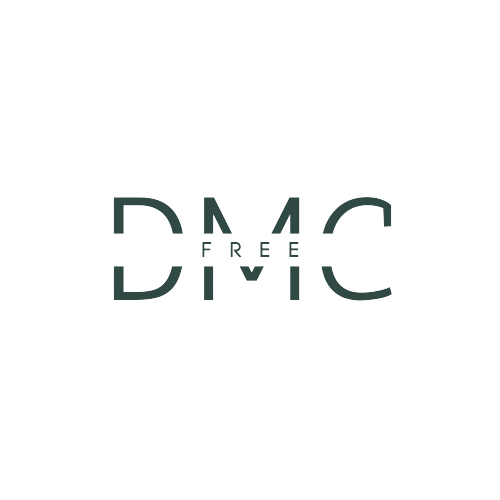
The healthcare industry has experienced a paradigm shift in recent years, moving from manual record-keeping to a more integrated, data-driven approach. With the burgeoning growth of big data, there is an increased need for professionals who can make sense of vast amounts of information. Enter the role of the healthcare data analyst. This article delves deep into understanding the role of a healthcare data analyst, what it entails, the pathway to becoming one, and the potential earnings in the profession.
Table of Contents
1. Defining the Role of a Healthcare Data Analyst
At its core, a healthcare data analyst is responsible for examining, interpreting, and representing data specific to the healthcare industry. They turn numbers and data points into actionable insights, which healthcare professionals can use to improve patient care, streamline operational efficiencies, and optimize costs.
Key Responsibilities Include:
- Collecting and interpreting data from various healthcare sources like patient records, billing, and clinical trials.
- Developing metrics and reports to identify trends.
- Collaborating with healthcare professionals to understand their data needs.
- Ensuring data security and patient confidentiality.
- Advising on the implementation of data-driven strategies to improve healthcare outcomes.

Subtitle: Healthcare Data Analyst Jobs – Breaking into the Industry
A career in healthcare data analytics is both rewarding and challenging, requiring specific skills and qualifications. Here’s how you can break into the industry:
1. Education:
- Bachelor’s Degree: A bachelor’s degree in health information management, statistics, data science, or a related field is a good starting point.
- Master’s Degree (Optional): While not mandatory, a master’s degree in health informatics, data analytics, or a related field can provide an edge in the job market.
2. Acquire Relevant Skills: Familiarize yourself with analytical software such as Python, R, and SQL. Knowledge of healthcare terminologies, Electronic Health Records (EHR), and Health Information Management Systems (HIMS) can be beneficial.
3. Certification: Certification like Certified Health Data Analyst (CHDA) or other relevant credentials can enhance your employability.
4. Practical Experience: Internships, co-op programs, or entry-level roles can offer hands-on experience. Engaging in real-world scenarios will deepen your understanding and skills in healthcare data analysis.
5. Networking: Join professional organizations like the American Health Information Management Association (AHIMA) to meet industry professionals and learn about job opportunities.
2. How Much Do Healthcare Data Analysts Earn?
The earning potential for healthcare data analysts varies by country, experience, and educational qualifications. Here’s a breakdown of the average annual salary for healthcare data analysts in major countries:
| Country | Average Annual Salary (in USD) |
|---|---|
| United States | $70,000 – $90,000 |
| United Kingdom | $50,000 – $70,000 |
| Canada | $60,000 – $80,000 |
| Australia | $65,000 – $85,000 |
| Germany | $55,000 – $75,000 |
| France | $50,000 – $70,000 |
Note: These figures are approximations and can vary based on factors such as region, experience, and employer.
3. Future Prospects and Growth
The demand for healthcare data analysts is projected to grow as more healthcare organizations recognize the importance of data-driven decisions. With advancements in machine learning and artificial intelligence, the potential for healthcare data analysis is boundless. As healthcare systems worldwide become more digitized, the need for skilled professionals in this sector will undoubtedly rise.
In Conclusion
Becoming a healthcare data analyst requires a mix of education, skills, and experience. It’s a career path that offers not just competitive salaries but also the satisfaction of making a tangible difference in the healthcare sector. By leveraging data to inform decisions, healthcare data analysts play a crucial role in enhancing patient care and improving the overall efficiency of healthcare systems globally.
FAQs on Healthcare Data Analysis
Q1: Is data analysis a good career?
A1: Absolutely. Data analysis is a burgeoning field with tremendous growth potential. As industries, including healthcare, become increasingly data-driven, the demand for skilled data analysts is rising. Not only does it offer competitive salaries, but it also allows professionals to make impactful decisions based on data insights.
Q2: What is the role of a clinical data analyst?
A2: A clinical data analyst specializes in collecting, organizing, and interpreting data specifically from clinical environments like hospitals and clinics. Their primary objective is to extract meaningful insights from patient histories, clinical trials, and other relevant data sources to improve patient care, streamline clinical operations, and support evidence-based clinical decisions.
Q3: Is data analyst and clinical data analyst the same?
A3: Not exactly. While both roles center around data analysis, a clinical data analyst focuses specifically on data within the healthcare and clinical sectors. In contrast, a general data analyst can work across various industries, analyzing a broader range of data types and often not delving as deep into healthcare-specific datasets.
Q4: How is SQL used in healthcare?
A4: SQL (Structured Query Language) is extensively used in healthcare to manage and query large datasets stored in relational databases. Healthcare institutions use SQL to:
- Retrieve patient records swiftly.
- Generate reports on hospital operations.
- Analyze patterns in patient symptoms, diagnoses, and treatments.
- Support research studies by fetching relevant data points.
- Aid in billing and insurance claims processes.
Q5: What are the types of analysis in healthcare?
A5: Healthcare employs a variety of analytical methods, including:
- Descriptive Analysis: Provides an overview of past data, like the number of patients admitted in a month.
- Diagnostic Analysis: Determines why something happened, such as the cause of a sudden spike in patient admissions.
- Predictive Analysis: Forecasts future occurrences, like potential disease outbreaks.
- Prescriptive Analysis: Suggests actions to tackle a problem, like measures to prevent disease spread.
Q6: What are the types of data analysis methods in healthcare?
A6: The primary data analysis methods in healthcare include:
- Qualitative Analysis: Focuses on non-numeric data like patient feedback and symptoms descriptions.
- Quantitative Analysis: Deals with numeric data, such as patient vital stats or medication doses.
- Statistical Analysis: Applies statistical techniques to interpret data, like determining the efficacy of a new drug.
- Time Series Analysis: Analyzes data points collected or recorded at specific intervals, useful for tracking disease progression.
Q7: Which type of data is most commonly used in healthcare?
A7: Healthcare predominantly relies on:
- Structured Data: Organized age, weight, and blood pressure data.
- Unstructured Data: Non-standardized data like doctor’s notes or radiology images.
- Semi-structured Data: A combination of both, like electronic health records, which contain standardized fields and free-text notes.


